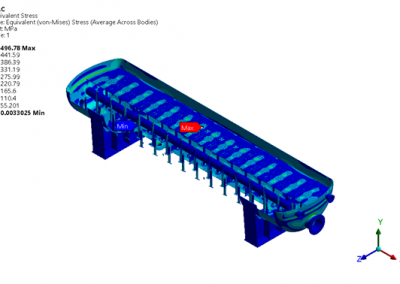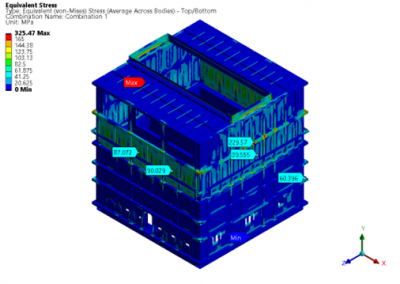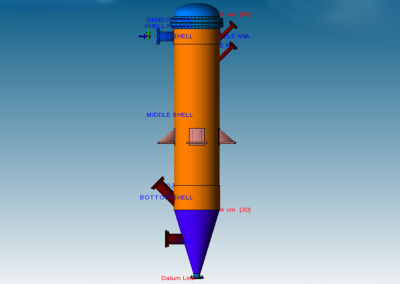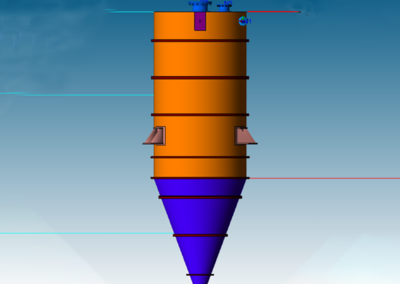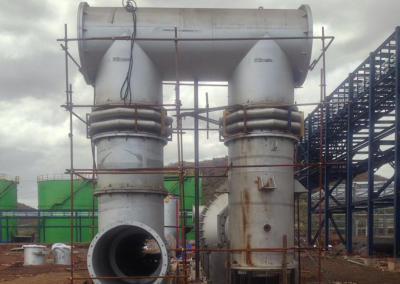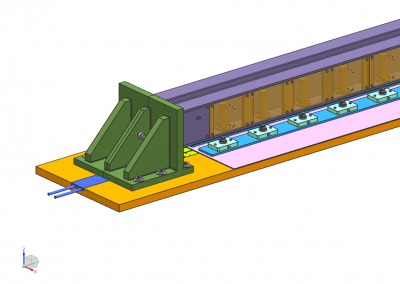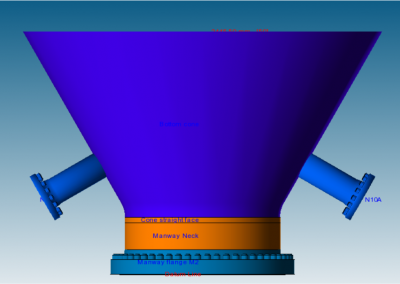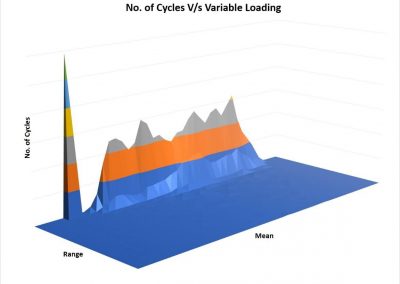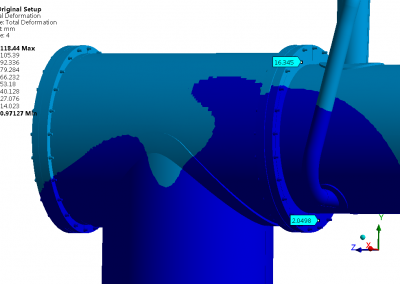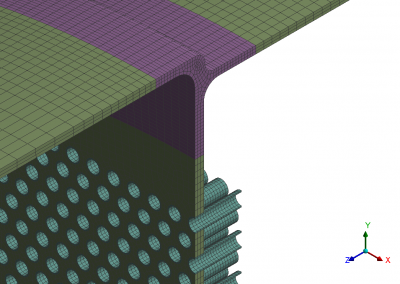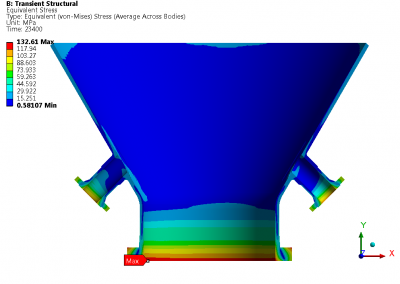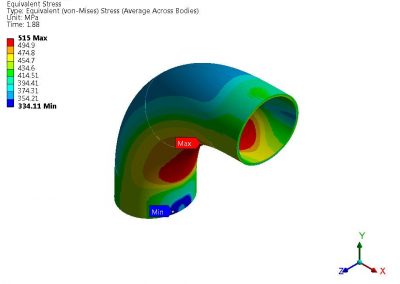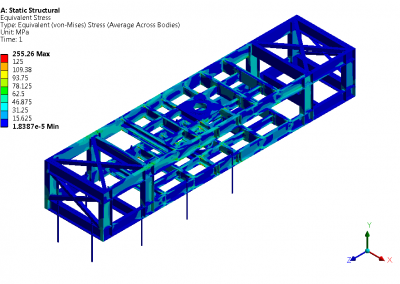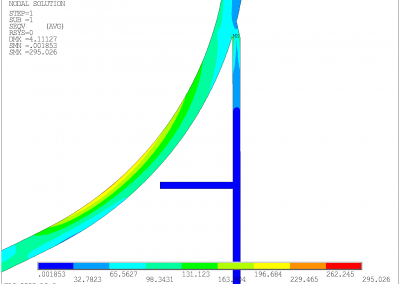Title: Ropeway Frame
Client: Millennium Properties (P) Limited
Software used: Ansys Mechanical
Duration: 3 Months
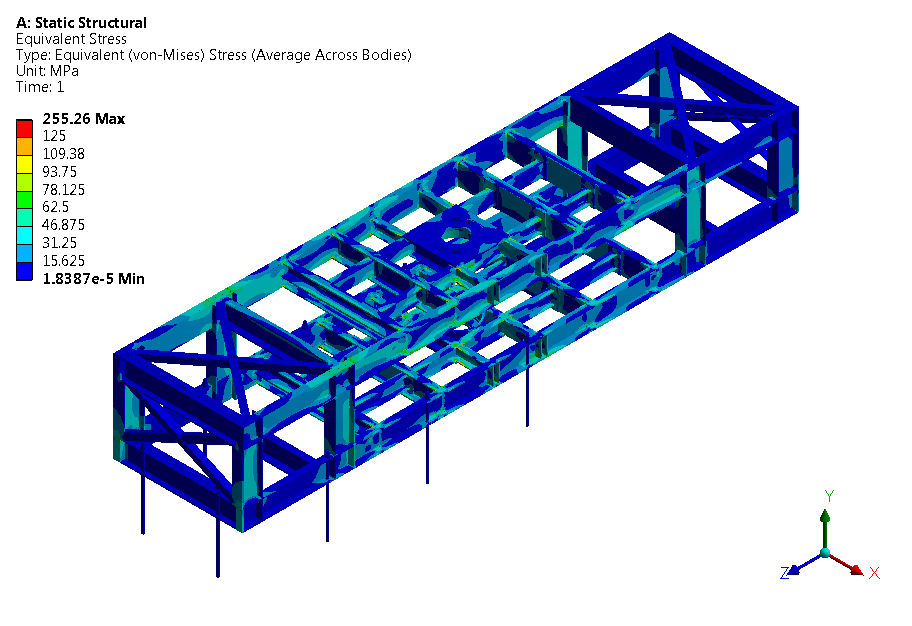
Keywords: Ropeway, frame, pulley, load path, structural
The structure of a ropeway needs to be robust and should be checked for strength whenever any change in capacity is changed. In one such case, where the existing ropeway was redesigned for capacity enhancement, the existing frame and pulley arrangement was checked for strength as per increased capacity parameters. Independent FE analysis was performed on the frame and pulley. The major loads acting are the tension in the rope and the mass of the gearbox and motor from the drive arrangement. The loads are applied to the interfaces of the frame and drive system. Linear static structural analysis is performed using linear elastic material properties. The design is checked for the deformation and stresses in the existing mainframe. The key in the design of structural frames is the strength of the members falling in the load path followed from the point of load applied to the locations of support. The frame shape is governed by the load and support locations, while the member's selection is governed by the load path. In the results of FE analysis, the stresses are observed, and the member experiencing high stresses are either increased in strength or additional members are added. In some cases, even additional members can be added, so that the original load path is diverted, and the weaker sections experience lower loads, reducing the stresses.
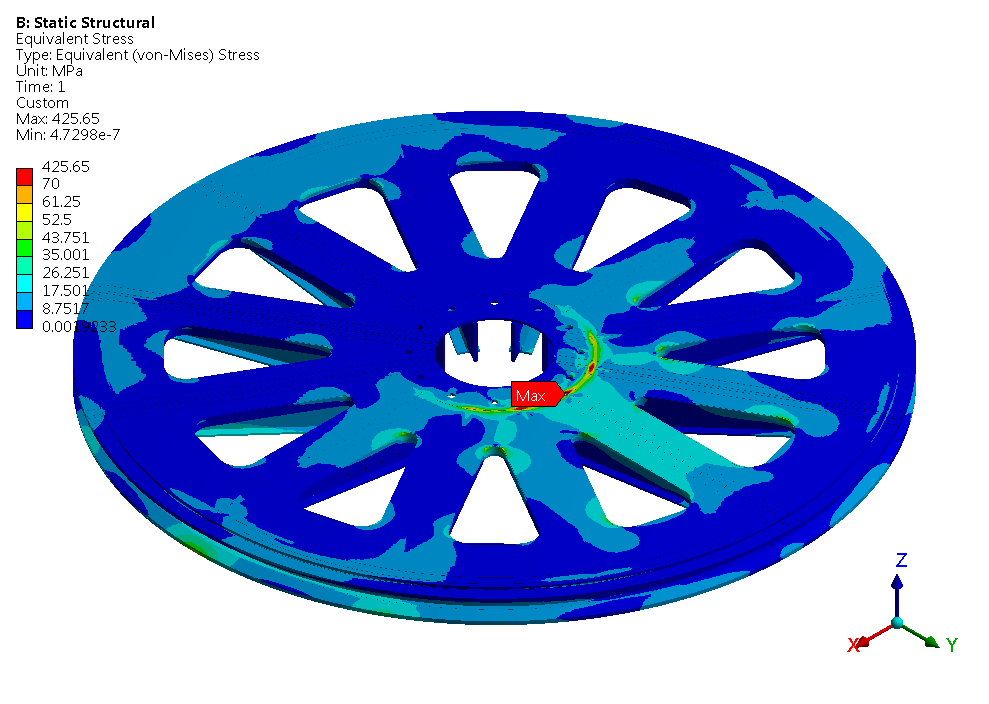
Benchmark: The key in checking the strength of the frame was to identify the load path in the frame which enabled to improve the strength of relatively weaker sections by minimum modifications of frame members and rearranging the existing members.
Recent Projects

